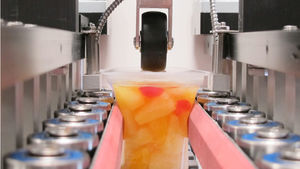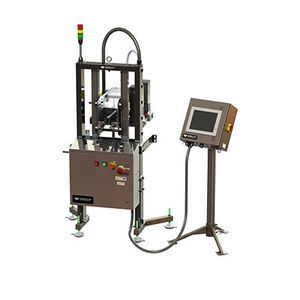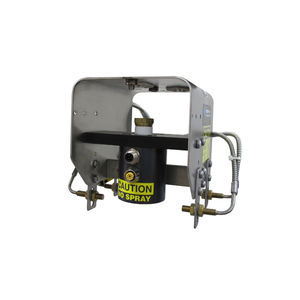
Liquid leak detector Fpressureremotefor plastic containers

Add to favorites
Compare this product
Characteristics
- Detected fluid
- liquid
- Technology
- pressure
- Other characteristics
- remote
- Applications
- for industry, for plastic containers
Description
Force technology detects leaks and low pressure in LN2 dosed containers, carbonated beverage containers and aerosol containers. Parallel belts transport the container past a sensor that measures the tension on the sidewall of the container. This action allows the system to measure the pressure inside the container. Utilizing DSP technology, the controller analyzes the measurement and assigns a merit value to each container. If the merit value is outside of the acceptable range, a reject signal activates a remote reject system and the container is removed from the line.
The TapTone Force sensor inspects 100% of containers at production line speeds. The system will detect leaks and low pressure in liquid nitrogen dosed containers and carbonated beverage containers. When combined with optional sensors, this system will also perform fill level inspection, cap inspection, and label detection.
Tripod floor mount system replaces the standard floor and conveyor mounts and includes a 1.83m (6 ft) stainless steel pole which can be cut to suit conveyor heights up to 2.18m (86 in) based on a 0.76m (3 in) container.
A User Interface is required for operation of the Force sensor. The Force (F) sensor is compatible with the T550 User Interface.
Force Sensor (F)
• Rapid on-line inspection: up to 1.9 m/sec (375 ft/min) maximum
• Pressure inspection up to 3.1 bar or 45 psi
• Ideal for low to mid-range pressure applications
• Can be used to inspect flexible metal or plastic containers
• T550 User Interface required for operation
Catalogs
Force
2 Pages
*Prices are pre-tax. They exclude delivery charges and customs duties and do not include additional charges for installation or activation options. Prices are indicative only and may vary by country, with changes to the cost of raw materials and exchange rates.











